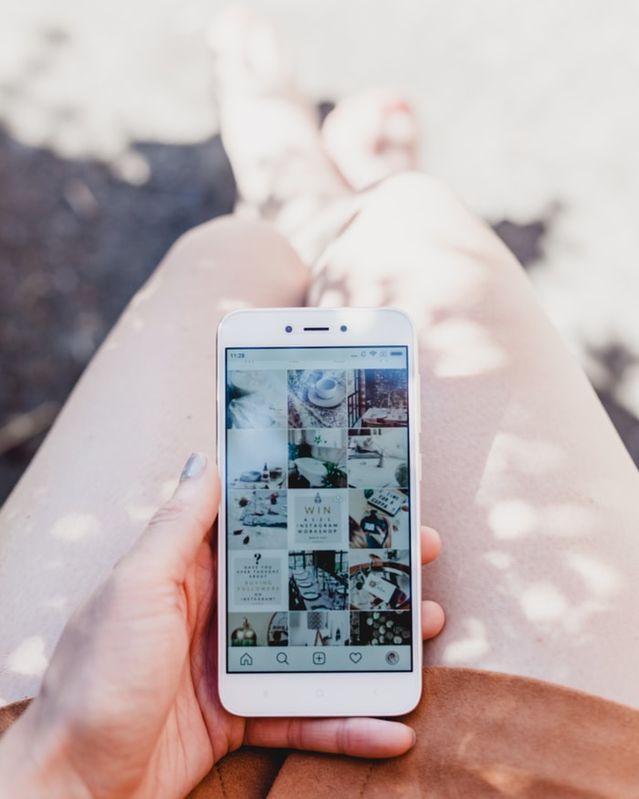With over a billion users, Instagram has become one of the most popular social media platforms. The app fosters creativity, individuality, and, according to its community guidelines, it is also is intended to foster meaningful interactions. However, experts have warned that social media may foster mindless browsing, and when this goes too far, there is a risk of shifting from healthy to unhealthy use. Like any other social app, Instagram users ignoring their digital well-being could develop problems pertaining to loneliness, bullying, self-esteem, social comparison, and addictive qualities can be triggered. Several apps have been created to meet the need for enhanced digital wellness.
Since Instagram has been directly critiqued for the potential problems associated with its image-based platform, the company has been making direct attempts to improve. Instagram has outlined user guidelines, provided resources, and has been actively testing new ways to enhance digital well-being. For example, since “likes” have been associated with prompting concerns related to social comparison, harassment, and mental wellness, Instagram has been testing the removal of likes in locations across the globe and this experiment is set to reach the United States soon. Although the company’s attempts to foster digital wellness are helpful, a true attempt to foster digital well-being comes from the consumer.
Here are seven ways that you can take charge of your digital well-being when on the gram:
1. Be purposeful
It’s common to browse Instagram out of mere boredom, but it’s this type of mindless perusing that has been noted as a catalyst for concerns pertaining to digital wellness. Try being purposeful with your usage. Why are you using it in the first place?
Many turn to the app to feel more connected, and it might be effective. A Flemish longitudinal study of adolescents using Instagram found that using the platform was related to feeling close and appreciated. Further, after six months, using Instagram helped them to reduce symptoms of depression. So sure, if you are seeking connection with others, perhaps you can indeed achieve that from seeing your loved ones’ posts and updates about what happened in the world that day. On the other hand, could goals such as these could be better achieved by making plans to spend time with a loved one you are missing or reading about current events from less-filtered sources?

2. Caution the time warp
A common concern is that time that is spent on apps such as Instagram equates to less time being spent other activities that could foster wellness such as focusing on an important task at work or spending quality time with your loved ones. On top of this, if browsing mindlessly, how can you know how much time you are truly spending perusing your feed? For some people, setting the intention to glance at the time before browsing can help to make a difference. However, this requires a heightened sense of self-awareness and personal accountability.
Many phones now come with the capability to measure usage, and Instagram has also developed features to help you be more mindful of how you are spending your time. In your settings, you will find the Your Activity tab. In this section, you can view the average time spent on Instagram for each day of the last week. You also have the option to set a reminder and the app to notify you when you have met your selected limit.
3. Explore with intention
By this point, hopefully, you’re getting the gist that mindless browsing is problematic. When you open your app, it’s important to be intentional about what you are viewing and how you are feeling as you absorb the material. Your general feed will likely be a mix of accounts you follow and ads. If you bring your awareness to the sentiment a post elicits, you can use that insight to recognize if you want to might benefit from unfollowing.
Separate from your general feed the explore section is an algorithm based on posts that you have liked in the past and accounts that you follow. You do have less control about what pops up here, but a few things can be done. When in the explore tab, let’s say you come across something you find offensive. If you click on the post, you will find three dots on the top right. When click you will have the option to see fewer posts of that nature, of it is truly dangerous (e.g., self-injury) you may opt to report the post.
3. Explore with intention
By this point, hopefully, you’re getting the gist that mindless browsing is problematic. When you open your app, it’s important to be intentional about what you are viewing and how you are feeling as you absorb the material. Your general feed will likely be a mix of accounts you follow and ads. If you bring your awareness to the sentiment a post elicits, you can use that insight to recognize if you want to might benefit from unfollowing.
Separate from your general feed the explore section is an algorithm based on posts that you have liked in the past and accounts that you follow. You do have less control about what pops up here, but a few things can be done. When in the explore tab, let’s say you come across something you find offensive. If you click on the post, you will find three dots on the top right. When click you will have the option to see fewer posts of that nature, of it is truly dangerous (e.g., self-injury) you may opt to report the post.
4. Choose your connections wisely
Although your feed may not be as expansive as the explore section of your account, it isn’t impenetrable to negative influences. Once more specific to who you intentionally followed, Instagram has been critiqued for tossing in other accounts as well. But even without the algorithm at play, there may be people that you have chosen to follow that share content that may be hindering your digital wellness. On top of that, there may be accounts you follow due to social pressure and you do not actually wish to see their (consistently negative) content.
Similar to unhelpful content found in the explore tab, you have options to protect your browsing in your feed as well. In the case in which someone is not causing you direct harm but you do not find their content to be in support of your mental wellness, you may opt to unfollow the account altogether. If you just need a break (like from that one family member who uses social media as a microphone for their election tirades) you may choose to mute their content. This temporary option can be overturned whenever you feel the time is right.
5. Recognize the highlight reel
Like many other forms of social media, Instagram was created to foster connections. JUst the wider social structures beyond the digital realm, Instagram provides a microcosm that achieves community, but not without the social risks of comparison and isolation. A typical user sees carefully curated content, not the unedited images or number of unused images that did not make the cut. On top of this, there is no shortage of third-party apps that will omit every last blemish and provide a digital makeover.
But Instagram isn’t deceptive about this: each user has access to several filters and editing options to manipulate their content. Editing aside, many users can relate to sharing the milestone event but omitting the less-fabulous surrounding details. Even though most users are aware of the meticulously selected nature of the content, mindless browsing may cause envy and depression. However, users if you can manage to catch yourself in the moments that you find yourself comparing and swiftly remind yourself that the reality is that you are viewing a highlight reel, you can provide yourself with a helpful perspective to protect your well-being.
6. Remember that Instagram isn’t candy
Recent research has highlighted that our brains tend to experience a pleasure response when it comes to social media. Chemical reactions aside, apps such as Instagram aim to connect, and the sense of belonging is a natural and normal human need. However, this need may drive us to compulsively check for updates. It’s a perk if apps can help us to feel connected to others, but it shouldn’t be the only way. Caution using Instagram as a go-to coping skill to alleviate mental health woes such as loneliness and stress.
Remember Pavlov’s dogs? Well, let’s try to not morph into one. Knowing how the app could give you a sugar high, be aware of the crash that may come after. Be proactive about creating strategies to counter-condition yourself if needed. One way to do this is to change your notification settings so you are not being triggered to check your account more than you’d like. Another option is to shift into dark mode. Originally designed to save your battery and protect your eyes, dark more might be an option to help remove the subliminal rewards you receive from your colorful feed.
7. Take safety seriously
Sticks and stones may break your bones and words can certainly hurt too. Cyberbullying encompasses harm done to another in the digital realm, such as threatening messages or sharing private or humiliating photos. This form of harassment is a common strain against digital wellness on Instagram, but sometimes cyberbullying gets minimized. More people tend to accept the harmful effects of traditional bullying versus cyberbullying. However, cyberbullying has very real effects on mental wellness from increases in distractibility to suicidality. On top of this, we live in an era in which cyberbullying and is now more common than traditional bullying. Compared to traditional bullying, cyberbullying has some additional tricky layers. For example, a humiliating post on Instagram can go viral or an aggressive comment can be hidden behind a cloaked profile.
To protect your digital well-being on Instagram, consider protecting your account. For one, changing your account from public to private can help to deter trolls and unwanted comments. Another proactive option is to apply an offensive comment filter. Instagram gives you the choice to use a manual filter or create your own with specific words that you will not tolerate on your page.
If you begin to receive unwanted messages you may consider blocking their access to your account. Sometimes blocking may seem drastic. Also, sometimes this may cause the bully to escalate. Instagram introduced the restrict option to help quell this reality. When you restrict someone their comments are only visible to them, they cannot see when you are active, and they cannot see if you have read their messages.
Sometimes people cross the line and tip-toeing around the problem could be dangerous. Instagram has a feature to help you report a violation. However, it’s also important to recognize that in certain situations reporting the issue to your local authorities can also help to keep you protected.

